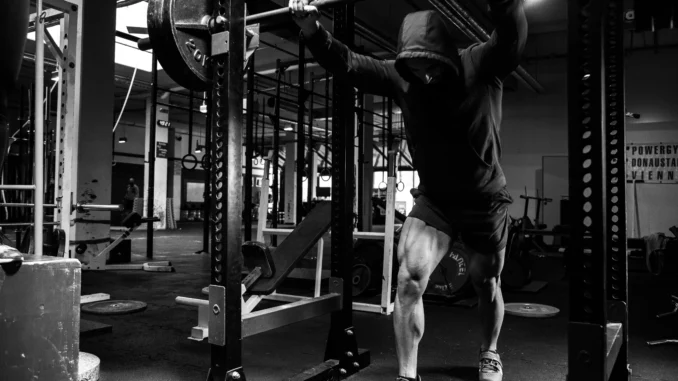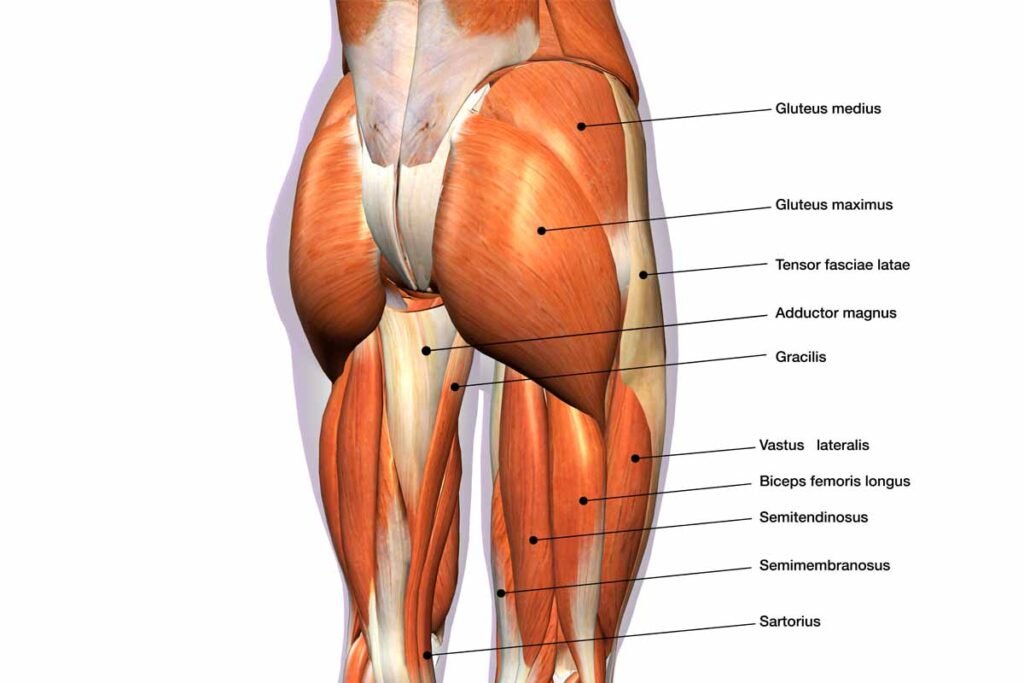
Hatfield squats are an incredibly simple and effective way to increase the strength and intensity of your muscles. This is a squat variation that is being used by many strongmen athletes, powerlifters, and bodybuilders because of its easy and effective way to increase strength. Hatfield squats easily lets you load more weight than your squat pr makes it undeniably one of the coolest exercises for your social media handle.
Loading more weight than usual makes the person using this squat variation look like something out of the ordinary. As we learn more about the Hatfield squat we will also learn are Hatfield squats a good exercise, worthy of being included in your workout?
What is the Hatfield Squat?
It is a powerful squat variation, unlike traditional squats, It’s often performed by Strongmen athletes or powerlifters. Hatfield squat variation is performed with the help of the Safety Squat Bar (SSB), SSB helps evenly distribute the load across the lifter’s upper back to help lessen the impact. The Bar safely rests upon the lifter throughout the lift while the hands are placed upon a stationary object like a safety rack. The hand placed on a stationary object helps the lifter by improving balance, keeping an upright posture, and making the lifters ascend easier.
Dr. Fred Hatfield, a two-time world champion powerlifter popularized this squat variation in the 1980s when he used to do them in his off-season. It was his way to eliminate the load on the lower back and spinal erectors and focus more on quads and increase strength in the lower body. It’s an easier version of squats because it requires less mobility in the ankle and hips, a lower amount of back strength, and a lower amount of balance.
How to do Hatfield Squats?
Before we begin with how to do it, make sure to have safety lines in place if you fail.
- Place Safety Squat Bar (SSB) in the squat rack according to your height. The SSB should be placed slightly lower than your shoulder. It would make lifting the bar from the rack easier.
- Now secure another barbell or strong handle at your hip height so it can be used by your hands.
- Make sure after lifting the SSB you should have space to move couple a of steps backward or forward while another barbell stays within the reach of your hands.
- Now grab the barbell with a shoulder-width grip and rotate your shoulder outwards to engage your lat and back muscles more.
- Your elbow will bend a little when maintaining a secure grip, keep a straight posture and your feet should be positioned slightly wider than your hips width. Keep your head and neck in the neutral position and keep your chin tucked in throughout the movement like you’re holding something under your chin.
- Keep an even weight on both ends of the barbell, creating a stable foot position. Build a little bit of pre-tension on your shoulder, hips, core, and quads.
- Now with that pre-tension begin the downward moment by bending your hips and knee. Keep lowering your leg until your knees are at 90 degrees or below like traditional squats.
- Take a pause at the bottom, now to begin with upward movement, push your feet into the ground to lift the weight, and take support from the hand.
By using your hand you will be able to support your body when your rep breakout from the form. Also, hand support will allow you to have a unique ability to overload the weight for the lifts. By hand support, we minimize the risk of breaking out of the form helps us keep our focus on the targeted muscle, and increase the load on it. Hatfield squats also give the lifter the ability to workout even if they’re suffering from an injury that prevents them from squatting so by using hand support they will be able to make it through the painful or restricted part of the exercise.
Additionally, most people reach technical failure due to their back or spine getting fatigued by the heavy load and their targeted muscle doesn’t get enough stimulation hence sabotaging muscle hypertrophy in target muscles.


The muscle targeted in Hatfield squats is Quadriceps, Gluteals, Adductor Magnus (Inner thigh), Core, and Calves. Like every other squats variation, this variation’s primary muscles targeted are quads and glutes.
Mistakes to Avoid
Like any other heavy load compound exercise, you should avoid it if you have any medical condition. Just because Hatfield squats allow you to load heavy doesn’t mean you should go overboard. Always select the eight that allow you to have full control of your body.
Hand support in Hatfield squats acts like a guide that helps you to maintain your form during the heavy lifts. Loading stupidly heavy because of your ego can cause possible injury. As a beginner, you would not be acquainted with this variation of squatting so before you try to lift heavy, keep your weight load as same as your traditional squat, and once you feel comfortable with the moment you can load more weight.
Benefits of Hatfield Squats
- Safety – You should always have a spotter with you whenever your weight load is heavy but some exercises like Hatfield squat make it easier for you to workout without a spotter because if you ever feel like you won’t be able to stand you can use your hands to support the weight and lift yourself up as long as the weight load is in the manageable zone.
- Overload – This variation of the squat will help you build confidence and muscle to lift heavy, you’ll be able to handle more weight on the Hatfield squat compared to your traditional squat PR after you get comfortable with the movement. This will lead you to gain more size and muscle as the majority of the muscle breakdown and hypertrophy will come from eccentric movement and eccentric movement we can use our arm to assist with the lift.
- Adding variety – Doing the same exercise for weeks is necessary to progress this is done by adding reps or weights to the same exercise. After a while, your progress will slow down like it’s almost dead. When you reach this point adding variety to your exercise can help you speed up your progress. Also adding using variations of normal squats will help you mentally it will help you enjoy the exercise again. Enjoying your workout is necessary if you want to do it for the long run.
- Less complex – Hatfield squats are less complex than the traditional squats for the person that is suffering from health problems such as headaches or inner ear complications that can cause dizziness. Hatfield squats eliminate the balance variable as your hand support will help you. It also minimizes the use of the upper body so it is a good choice for people suffering from upper-body injury and Hand support can help lower the risk of worsening your past injury.
- Legday frequency – People can be benefitted by training their legs twice a week but most people can’t do it. Some can’t do it due to tissue tolerance, injury, energy level, etc. Hatfield squats can get rid of these issues like energy level, and tissue tolerance it gets handled when squatting if supported by hand and that’s what Hatfield squat does.
How to program Hatfield squat in your workout?
Some basic points have been given to understand your strength level in Hatfield squats. It will help you determine the max weight load you should take on.
Beginner lifters that have less than a year experience of in squat will be able to train at least 120 to 130% compared to their 1RM in a conventional squat. Intermediate lifters will be able to train at least 130% to 140% compared to their 1RM in a conventional squat. Advanced lifters will be able to handle 140% to 150% of their 1RM conventional squat.
During the first three-time of trying Hatfield squats do 25 reps or less than that per workout, it can be 5×5, 3×8, etc. During the first three times don’t train more than your 1RM in conventional squats. It will give your muscles a good start to experience intense muscle stimulus in the future. Once you’re done with prepping your legs you won’t have any problem programming Hatfield squats in your workout meaning you will be able to handle a weight load more than your 1RM.
Final words
Hatfield squats can be a great addition to your workout but still, it depends upon the person and his/her goal. If you want to work out while having a minor upper-body injury or you want to focus load on your quad without stressing your back and spine then you should add Hatfield squats to your workout. If you have an injury it would be better if you first talk with your coach or doctor. If you have a problem doing Hatfield squats there are some better alternatives like belt squat that requires less effort.